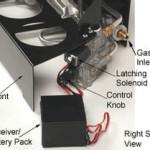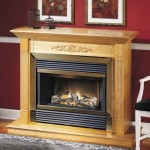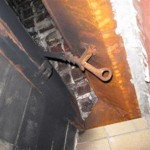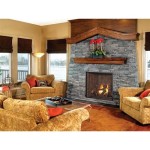Installing a TV Over a Stone Fireplace: Ideas and Considerations
Integrating a television above a stone fireplace is a popular design choice, offering a visually appealing focal point while maximizing space. However, this installation presents unique challenges that require careful planning and execution. This article discusses key considerations and ideas to ensure a successful and aesthetically pleasing installation.
The primary challenges stem from the nature of stone itself. Stone is a heavy and often uneven material, making mounting difficult. Furthermore, the heat generated by the fireplace can damage the television, and concealing wiring within the stone structure requires specialized techniques. Overcoming these challenges requires a strategic approach that takes into account the specific characteristics of the stone, the fireplace functionality, and the desired aesthetic.
Assessing Fireplace Functionality and Heat Management
Before beginning installation, the fireplace's functionality must be thoroughly assessed. The type of fireplace (wood-burning, gas, or electric) significantly impacts the amount of heat generated. Wood-burning fireplaces produce the most heat, posing the greatest risk to the television. Gas fireplaces generate moderate heat, while electric fireplaces produce the least. This thermal consideration is crucial for determining the appropriate mounting height and the need for heat shielding.
The recommended minimum distance between the top of the fireplace and the bottom of the television is typically around 12 inches, but this distance can vary depending on the fireplace type and the television's heat tolerance. If a closer placement is desired, a heat shield should be installed between the fireplace and the television. Heat shields are designed to deflect heat away from the television, mitigating potential damage. These shields can be purchased commercially or custom-fabricated to fit the specific fireplace dimensions.
Another crucial consideration is the fireplace usage frequency. If the fireplace is used regularly, the risk of heat damage to the television increases. In such cases, prioritizing heat management strategies and potentially opting for a higher mounting position is advisable. Conversely, if the fireplace is rarely used, heat management may be less of a concern, allowing for more flexible placement options. Ultimately, the goal is to balance aesthetic appeal with the long-term protection of the television.
Mounting Considerations and Structural Integrity
Mounting a television on a stone surface demands careful consideration of structural integrity. Stone is a dense and often brittle material, and drilling can be challenging. The type of stone used in the fireplace (e.g., stacked stone, fieldstone, or manufactured stone veneer) affects the appropriate drilling techniques and the type of anchors required.
For natural stone, using a hammer drill with masonry bits is essential. The drill should be operated at a slow speed to prevent cracking or chipping the stone. High-quality masonry anchors, such as sleeve anchors or wedge anchors, are recommended to provide a secure hold. These anchors expand within the drilled hole, creating a strong friction grip. The size and number of anchors required will depend on the weight of the television and the type of stone.
For manufactured stone veneer, the installation process is similar, but the underlying substrate (typically concrete or cement board) must also be considered. Using anchors that are long enough to penetrate both the stone veneer and the substrate is crucial for ensuring a secure mount. It is often advisable to consult with a professional installer who has experience working with stone fireplaces to ensure proper mounting techniques and prevent damage to the stone.
Concealing Wiring and Achieving a Clean Aesthetic
Concealing wiring is a significant aspect of achieving a clean and aesthetically pleasing installation. Exposed wires can detract from the overall look, so planning for wire management is critical. Several options exist for concealing wiring, each with its own advantages and disadvantages.
One option is to run the wires behind the stone itself. This requires creating channels or pathways within the stone structure, which can be challenging and may require the expertise of a stonemason. This method provides the most discreet wire concealment but is also the most labor-intensive and potentially damaging to the stone.
A more common approach is to use wire management channels or raceways. These are paintable plastic conduits that can be mounted on the surface of the stone to conceal the wires. While not completely invisible, wire management channels can be effectively disguised to blend in with the stone's texture and color. They also offer easy access to the wires for future maintenance or modifications.
Another option is to use a recessed outlet box behind the television. This allows for a flush mount and eliminates the need for a visible power cord. However, installing a recessed outlet box requires cutting into the wall, which may not be feasible for all stone fireplace designs. Regardless of the chosen method, careful planning is essential to ensure that all wires are safely and neatly concealed, contributing to a polished and professional appearance.

Can I Mount My Tv Above The Fireplace

Natural Stone Fireplaces With Wall Mount Television Design Ideas

Natural Stone Fireplaces With Wall Mount Television Design Ideas

How To Mount A Tv Above Fireplace And Hide Wires

Tv And Fireplace In One Room Find The Perfectly Happy Spot For That Black Beast Form Design Interior Organization

Stylish Tv Mounting Over Stone Fireplace

Mounting A Tv Over The Fireplace It S Not Mistake Used To Be Cepro

Can I Mount A Tv Above My Fireplace Over The Top Mounts

Made How To Mount A Flat Screen Tv On Stone Fireplace Diy

Tv And Fireplace In One Room Find The Perfectly Happy Spot For That Black Beast Form Design Interior Organization








